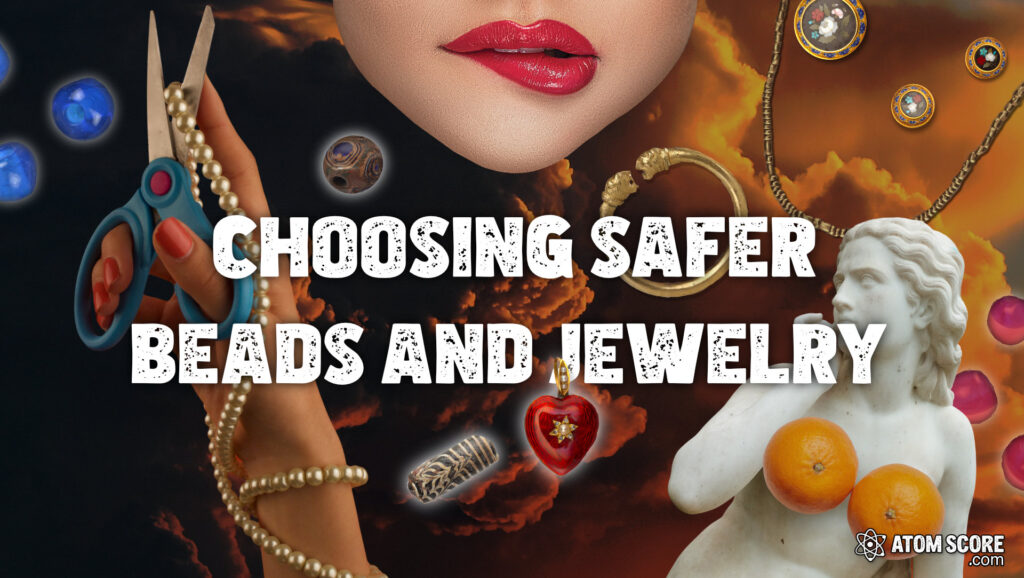Given how many jewelry and bead supplies contain lead and cadmium, here are a few choices you can make to reduce your risk of buying products made with toxic heavy metals.
Skip the random metal alloy beads, including those marketed as “nickel alloy,” “Tibetan silver,” “brass alloy,” or just plain “silver.” There is no indication of what the factory added here. Lead is common in vintage costume jewelry and cadmium is more common in newer pieces.
Look for reputable stamped metals including 925 sterling silver, stamped gold (warning: gold can sometimes contain cadmium and mercury), or use stainless steel beads. Tungsten carbide and titanium are great options too. Sterling silver is a great option if you need something nickel free.
Beware of products advertised as a precious metal without stamps and products from random international sellers. Etsy and other websites are exploding with cheap findings purchased on international websites like AliExpress, where items are resold at high margins to unsuspecting buyers. Make sure the retailer who sells you jewelry components is reputable, since I have tested silver jewelry from India made with high cadmium. At this time I cannot recommend random international products sold on third party marketplaces.
Buy from reputable companies who state they avoid using lead and cadmium in their jewelry making components. Two companies I like are JMI Findings and Fire Mountain Gems. Both manufacturers affirmed in customer service chats with us that they restrict these metals in their supply chains. That does not mean their older products will test clean, or that all of their new products will be free of lead and cadmium, so you may wish to contact them about specific components and finishes.
Some non-metal components may include lead in coatings and dyes, so you are not able to test your beads, I recommend sticking with these new low-risk beading options: new plastic, semi-precious gemstones, freshwater pearls, and unpainted wood. Cotton, silk, polyester, or stainless steel works well as beading wire. Painting your own wood beads can be a fun activity with kids. New costume jewelry kits sold for children by large U.S. brands are generally fine because they are tested in accordance with CPSIA. Older sets can test high in lead!
For those who like baubles, lead-free crystal beads is an option that replaces traditional high lead crystal. Although glass beads may contain lead and cadmium, Swarovski has produced a line of lead-free crystal that is OEXO-TEX 100 certified, but I have not had the opportunity to test them. Do inquire about other metals of concern such as cadmium and antimony, which may still be present. Glass may be impregnated with toxic metals as colorants but I have less concern about adults using these items than children who may swallow beads.
A last note for makers: it is always a good idea to take precautions working with any process that requires sanding or pulverizing materials to avoid inhalation of the dust.


